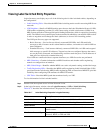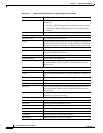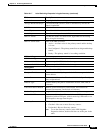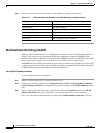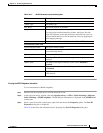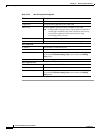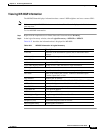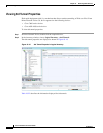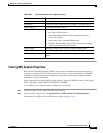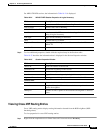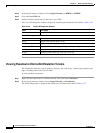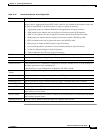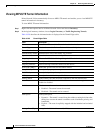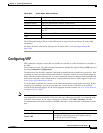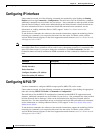
18-47
Cisco Prime Network 4.0 User Guide
OL-29343-01
Chapter 18 Monitoring MPLS Services
Monitoring MPLS Services
Viewing BFD Session Properties
Bidirectional Forwarding Detection (BFD) is used to detect communication failures between two
elements, or endpoints, that are connected by a link, such as a virtual circuit, tunnel, or LSP. BFD
establishes sessions between the two endpoints over the link. If more than one link exists, BFD
establishes a session for each link.
Prime Network Vision supports BFD with the following protocols: BGP, IPv4 (static), IPv6 (static),
IS-IS, LAG (Ether channel), MPLS TE, MPLS-TP, and OSPF.
To view BFD session properties that are configured on an element:
Step 1 In Prime Network Vision, double-click the required device.
Step 2 In the inventory window, choose Logical Inventory > Bidirectional Forwarding Detection.
The properties for BFD sessions are displayed as shown in Figure 18-19.
Table 18-22 6rd Tunnel Properties in Logical Inventory
Field Description
Tunnel Name 6rd tunnel name.
IPv6 Prefix IPv6 prefix used to translate the IPv4 address to an IPv6 address.
Source Address Tunnel IPv4 source IP address.
Tunnel SubMode Tunnel type:
• 6rd—Static IPv6 interface.
• 6to4—IPv6 address with the prefix embedding the tunnel
source IPv4 address.
• Auto-tunnel—IPv4-compatible IPv6 tunnel.
• ISATAP—Overlay tunnel using an Intra-Site Automatic Tunnel
Addressing Protocol (ISATAP) address.
Prefix Length IPv4 prefix length used to derive the delegated IPv6 prefix.
Suffix Length IPv4 suffix length used to derive the delegated IPv6 prefix.
MTU Maximum transmission unit (MTU) configured on the 6rd IPv4
tunnel.



